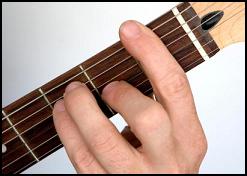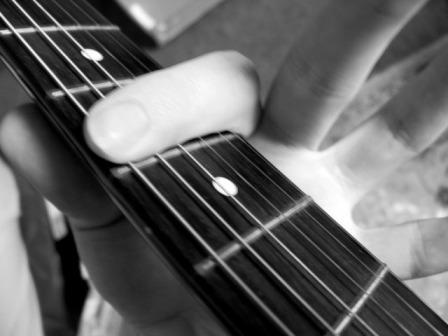
Categories
- Advanced Guitar (7)
- Beginner Guitar (22)
- Contest (7)
- Course Walk Through (8)
- Fingerstyle (3)
- Gear (5)
- Gibson (9)
- Gibson's Learn & Master Guitar (74)
- Guest (5)
- Guitar Gathering (8)
- Guitar Tips (34)
- Guitar Video (22)
- Guitarists (9)
- In-Studio (1)
- Intermediate Guitar (17)
- Maintenance (3)
- Mobile App (4)
- Monthly Video Tip (21)
- Playing Technique (5)
- Sale (4)
- Student Profile (22)
- Student Support Forum (17)
Archives
- January 2026(1)
- December 2025(1)
- November 2025(1)
- October 2025(1)
- September 2025(1)
- August 2025(1)
- July 2025(1)
- June 2025(1)
- May 2025(1)
- April 2025(1)
- March 2025(1)
- February 2025(1)
- January 2025(1)
- December 2024(1)
- November 2024(1)
- October 2024(1)
- September 2024(1)
- August 2024(1)
- July 2024(1)
- June 2024(1)
- May 2024(1)
- April 2024(1)
- March 2024(1)
- February 2024(1)
- January 2024(1)
- December 2023(1)
- November 2023(1)
- October 2023(1)
- September 2023(1)
- August 2023(1)
- July 2023(1)
- June 2023(1)
- May 2023(1)
- April 2023(1)
- March 2023(1)
- February 2023(1)
- January 2023(1)
- December 2022(1)
- November 2022(1)
- October 2022(1)
- September 2022(1)
- August 2022(1)
- July 2022(1)
- June 2022(1)
- May 2022(1)
- April 2022(1)
- March 2022(1)
- February 2022(1)
- January 2022(1)
- December 2021(1)
- November 2021(1)
- October 2021(1)
- September 2021(1)
- August 2021(1)
- July 2021(1)
- June 2021(1)
- May 2021(1)
- April 2021(1)
- March 2021(1)
- February 2021(1)
- January 2021(1)
- December 2020(1)
- November 2020(1)
- October 2020(1)
- September 2020(1)
- August 2020(1)
- July 2020(1)
- June 2020(1)
- May 2020(1)
- April 2020(1)
- March 2020(1)
- February 2020(1)
- January 2020(1)
- December 2019(1)
- November 2019(1)
- October 2019(1)
- September 2019(1)
- August 2019(1)
- July 2019(1)
- June 2019(1)
- May 2019(1)
- April 2019(1)
- March 2019(1)
- February 2019(1)
- January 2019(1)
- December 2018(1)
- November 2018(1)
- October 2018(1)
- September 2018(1)
- August 2018(1)
- July 2018(1)
- June 2018(1)
- May 2018(1)
- April 2018(1)
- March 2018(1)
- February 2018(1)
- January 2018(1)
- December 2017(1)
- November 2017(1)
- October 2017(1)
- September 2017(1)
- August 2017(1)
- July 2017(1)
- June 2017(1)
- May 2017(1)
- April 2017(1)
- March 2017(1)
- February 2017(1)
- January 2017(1)
- December 2016(1)
- November 2016(1)
- October 2016(1)
- September 2016(1)
- August 2016(1)
- July 2016(1)
- June 2016(1)
- May 2016(1)
- April 2016(1)
- March 2016(1)
- February 2016(1)
- January 2016(1)
- December 2015(1)
- November 2015(1)
- October 2015(1)
- September 2015(1)
- August 2015(1)
- July 2015(1)
- June 2015(1)
- May 2015(1)
- April 2015(1)
- March 2015(1)
- February 2015(1)
- January 2015(1)
- December 2014(1)
- November 2014(1)
- October 2014(1)
- September 2014(1)
- August 2014(1)
- July 2014(1)
- June 2014(1)
- May 2014(1)
- April 2014(1)
- March 2014(1)
- February 2014(1)
- January 2014(1)
- December 2013(1)
- November 2013(1)
- October 2013(1)
- September 2013(1)
- August 2013(1)
- July 2013(1)
- June 2013(1)
- May 2013(1)
- April 2013(1)
- March 2013(1)
- February 2013(1)
- January 2013(1)
- December 2012(1)
- November 2012(1)
- October 2012(1)
- September 2012(1)
- August 2012(1)
- July 2012(1)
- June 2012(1)
- May 2012(1)
- April 2012(1)
- March 2012(1)
- February 2012(1)
- January 2012(1)
- December 2011(1)
- November 2011(1)
- October 2011(1)
- September 2011(1)
- August 2011(1)
- July 2011(1)
- June 2011(1)
- May 2011(1)
- April 2011(1)
- March 2011(1)
- February 2011(1)
- January 2011(1)
- December 2010(1)
- November 2010(1)
- October 2010(1)
- September 2010(1)
- August 2010(1)
- July 2010(1)
- June 2010(1)
- May 2010(1)
- April 2010(1)
- March 2010(1)
- February 2010(1)
- January 2010(1)
A Little "Barre Chord Magic" for Guitar
Thursday, February 10, 2011Sooner or later, every beginner guitar player hits a wall or two in their playing... a tough skill that won't be easily mastered. One of the biggies is Barre Chords!
If you're reading this, you probably know what a barre chord is, but just in
 case you don't: a barre chord is a guitar chord that is played up the neck, using your index finger to "barre" across the whole neck (sort of a portable capo formed by your index finger).
case you don't: a barre chord is a guitar chord that is played up the neck, using your index finger to "barre" across the whole neck (sort of a portable capo formed by your index finger).They offer such a challenge that you might be tempted to just skip this skill and play the songs that can be played with easy "open" chords. Hey, what's so great about those sour grapes anyway?
The reason barre chords are such a big deal (and so desirable to learn) is that they offer some great advantages:
1. Portability-- they allow you great portability up and down the whole guitar neck. This lets you switch between chords and the scales that go with them instantly. If you want to throw in a lick around the 10th fret right after an open "G" chord, you'd have to move lightning fast and if you did, you'd still have good chance of an embarrassing mistake. But if you're already at the 10th fret, making a "G" barre chord, you're golden!
2. Distinct Sound-- Barre chords don't have the same jangly, ringy sound that open chords do. Because all the strings are fretted in a barred chord, they sound "tight" or even "controlled". And because you usually play more than one barre chord in a song, they offer a kind of uniformity of tone between chords.
Because your index finger is in contact with all the strings across the neck, you're able to completely damp the strings in a nano-second. This lets you create lots of great percussion sounds between chords. Chikka chikka chowwww!
3. Ease of Use (Once you've learned them, that is)-- Barre chords have the advantage of letting your fretting hand make a lot of different chords even while keeping your fingers in the same relative position (the same chord shape). They also let you switch from chords to solo notes with the same basic shapes.
All in all, they give you LOTS of new tone colors to paint with when you're playing guitar... and all from learning a singular skill. So, yes. They are worth the trouble to learn.
SO HOW DO I CONQUER THEM?
Barre chords are such a challenge at first for ONE SIMPLE REASON: Unfamiliar muscle memory... especially in your index finger. You're index finger just isn't accustomed to doing this particular job using these particular tiny muscles.
What do I mean? Your hands are used to gripping--curling your fingers around an object to hold it fast. But the action needed to make a barre chord is NOT a gripping action. Your index finger is going to have to learn a new skill... something more like "mashing" or "clamping" (with some assistance from the thumb on the back of the neck).
First, the index finger has to stay straight even while it's "working". This will feel very strange at first and your finger will keep trying to return to its default "curling" position.
A good exercise is to just put your index finger across the neck at maybe the 7th fret and train it to hold the top string (fattest) and the bottom two strings (skinniest) in such a way that you can play those strings without them buzzing. Keep working on it until you can hold down all 6 strings and play them without buzzing.

Here are a couple of hints that will help:
1. Drop Your Wrist-- You may be tempted to "sqeeze" the neck between your index finger and the heel of your palm. If you let yourself do that, it will frustrate you! Instead, drop your wrist away from the back of the neck and let the thumb make the contact with the back of the neck.
This will be counter-intuitive, but it's the only way to form a good barre chord.
2. Keep the Index Finger Straight-- If you've done the exercise above, you'll be able to do this pretty quickly with no problem. The good news is, once you have this down, you'll be making barre chords with more ease than even a lot of the open chords you're used to.
I remember feeling like an outsider when I was just getting started playing. The "cool" guys knew how to do barre chords and I still found them impossible. I wish someone had told me what I just told you. I could have been jamming along, playing "Proud Mary" right along with them (even though I didn't have the right haircut).
 Support Forum
Support Forum